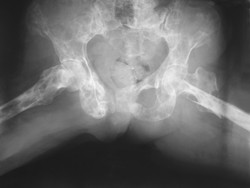Tumour environment in the equation
Two thirds of MM cases develop in older patients and are nearly always incurable. The cancer develops from mature antibody-producing B cells that develop in niches in the bone marrow. They are surrounded by tissue cells, bone marrow cells, blood vessel cells and immune cells. Cytokines in the BMM helps cancer cells to avoid cell death, thereby making them immune to medication. MM pathogenesis not only involves genetic changes within the tumour but also the emergence of supportive conditions by the BMM. The EU-funded OPTATIO(opens in new window) (Optimizing targets and therapeutics in high risk and refractory multiple myeloma) consortium investigated the essential components of this support system. OPTATIO developed a data warehouse from registries and a virtual biobank to identify possible resistance biomarkers. Several markers were characterised, including two for resistance to bortezomib, a frontline treatment for MM. Clinical data analysis correlated the presence of particular MM-BMM interactions with MM pathogenesis and therapy resistance from in vitro and in vivo models. These data were validated using autologous MM-BMM co-culture assays. The models were also used to develop lead compounds that target myeloma cells within their microenvironment. To screen for efficacy of the drugs, mouse models for non-invasive imaging in MM and immune-intact animals were developed. The technique used multi-colour light-sheet fluorescence microscopy and established xenogeneic MM models with human MM cell lines of non-invasive bioluminescence whole-body imaging. Two compounds exceeded the anti-myeloma activity of bortezomib. In addition, some of the compounds modified the myeloma-associated microenvironment. Chick chorioallantoic membrane assays revealed significant suppression of myeloma-induced neoangiogenesis close to xenografts and diminished revascularisation even at low concentrations. Information about OPTATIO progress was disseminated at scientific meetings and high-profile conferences. Experimental results have been published in 31 peer-reviewed publications. Expected impact of the project includes better diagnostics, new drug screening approaches and effective personalised therapies for MM treatment.







